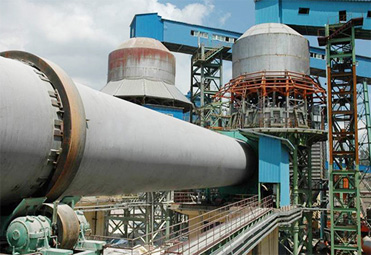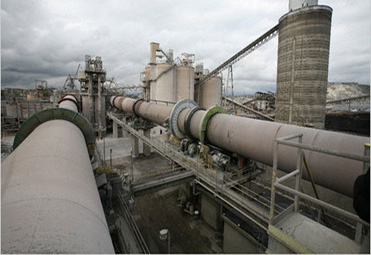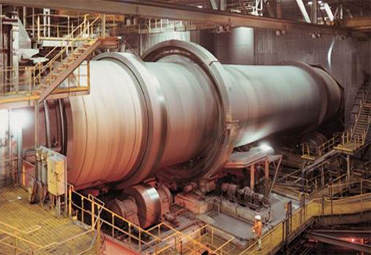Rotary kiln has been used across various industries to drive chemical reactions by thermal processing. Rotary kilns have become very established in fields such as cement, lime, and minerals. Other application areas that reduction of oxide ore, reclamation of hydrated lime, calcining of petroleum coke, and hazardous waste reclamation.
Fundamentally, rotary kilns are heat exchangers in which energy from a hot gas phase is extracted by the bed material. During its passage along the kiln, the bed material will undergo various heat exchange processes, a typical sequence for long kilns being drying, heating, and chemical reactions that cover a broad range of temperatures. The rotation of a cylinder-shaped vessel positioned longitudinally approximately 30° of the horizontal position ensures a continuous motion of catalyst between the entrance and exit of the kiln.
Rotary kilns use an inclined cylinder as the combustion chamber, which rotates slowly to accomplish mixing of the materials and to attempt to expose all surfaces and substances to oxygen within the chamber. Auxiliary fuel, mixed with air, can be injected into either end of the rotating combustion chamber or at one or more injection nozzles along the side. Rotary kilns have been successfully used to treat hazardous as well as conventional wastes; solid, semisolid sludges, and liquids; alone or simultaneously. The kilns have been operated at temperatures as high as 1,500°C (3,000°F).



Rotary kilns are synonymous with cement making, being the workhorses of this industry. There are many types of rotary kiln arrangements for producing cement clinker with each incremental design goal aimed at improving energy efficiency, ease of operation, and product quality and minimizing environmental pollutants. Rotary cement kilns can be classified into wet-process kilns, semidry kilns, dry kilns, preheater kilns, and precalciner kilns.
Rotary kilns are used for burning, calcining, reducing, roasting, volatilizing or sintering a very broad range of materials. In the mineral industry they are deployed to process a variety of minerals, such as nickel, iron, zinc, vanadium, expanded clay, etc.
